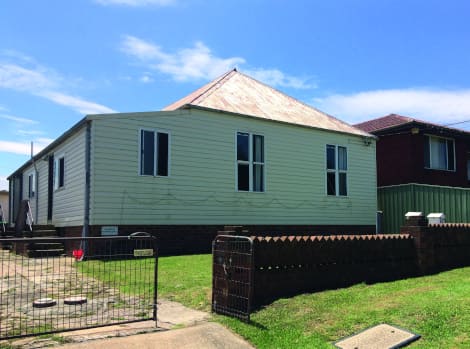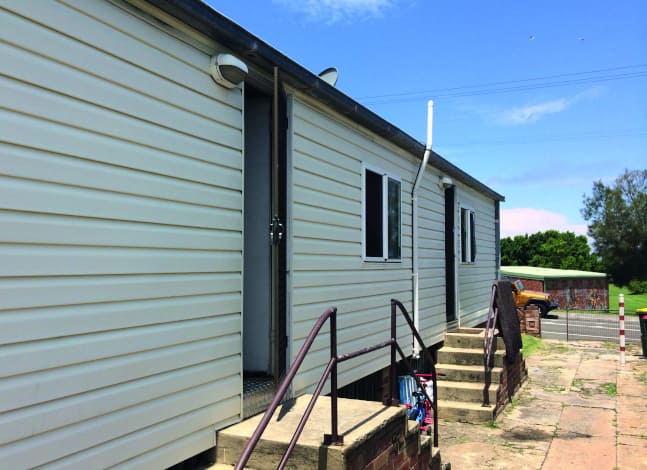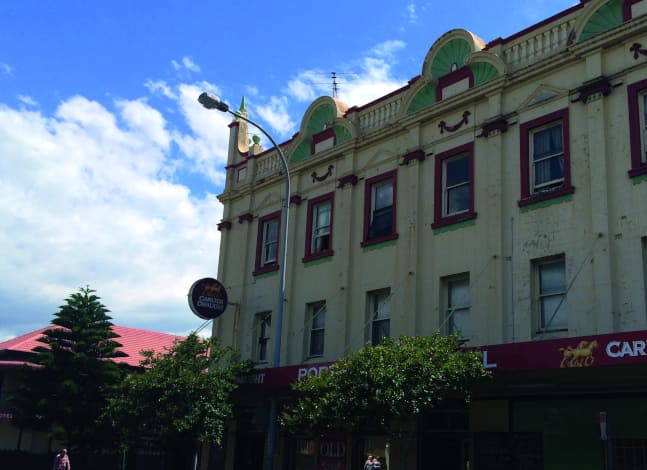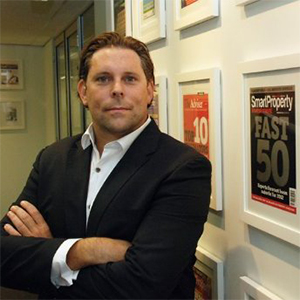Why buying in Port Kembla made sense
Property investment’s an interesting game. Just when you think you’ve got it all worked out, with a plan in mind, it turns on its head.

I’m speaking about our most recent purchase in Port Kembla. In my last column, I ran you through the buying process and how we secured two two-bedroom townhouses for $320,000, located on the same title.
With a combined rental of $490 per week, it’s delivering a yield of eight per cent – which is pretty good.
Positioned on a street in Port Kembla that fronts a park through which the beach can be accessed, it’s in an enviable position. This is also complemented by the fact it’s within walking distance of the centre of Port Kembla, as well as the Westfield shopping centre in Warrawong – the adjoining suburb.
Following the purchase of the property, I spent a weekend in Port Kembla, stopping overnight in the townhouse at the rear – seeing as at that point in time it was unrented.
I planned to spend the weekend checking out the property and the surrounding neighbourhood, as well as getting a few surfs and a fish in. To make sure I got the full Port Kembla experience, I invited a few mates along as well.
As I’ve said many times, property investment is about the numbers; you’re not making an emotional purchase.
It was interesting to get their perceptions on the area before and after the weekend. Like me, they had Port Kembla slated as an industrial town with a big smoke stack and plenty of industry. I must admit that before visiting the area they weren’t particularly complimentary of the place.
Yes, it’s an industrial town and the main drag could do with a little bit of a facelift, but it has plenty of character and is very liveable. While the industrial infrastructure around the port and into the inland areas isn’t very picturesque, it’s the lifeblood of the area along with the wider Illawarra.
As an investor, the area makes a lot of sense. Ongoing commitment to the development of heavy industry, matched with a robust and diversified community base and local economy – with all the infrastructure and amenities anyone would require – makes it an ideal place to acquire investment property.
An ongoing demand for lower-end rentals reaffirms this position. So too do fundamental indicators around job and population growth that point to positive pressure on capital values over time. It all stacks up from an investment point of view and reinforces our decision to invest there.
Ground truth
Back to my weekend trip there: the last four investment properties we’ve purchased have effectively been site unseen. That said, a lot of work has gone into identifying and acquiring them.
While I say site unseen, I have seen pictures and videos of the properties, which is part of the process offered by my buyer’s agent when we’re assessing new opportunities.
The pictures I saw of our Port Kembla properties didn’t particularly inspire me, but looking at the numbers and the upside potential, I was very enthused.

As I’ve said many times, property investment is about the numbers; you’re not making an emotional purchase.
Considering my perception of the property (and my mates’), my mission down to Port Kembla was supposed to determine the renovation I was going to undertake on the place, with a view to increasing the capital value and rental return.
The pictures of our Port Kembla properties didn’t particularly inspire me, but looking at the numbers and the upside potential, I was very enthused
With this in mind, I met with Steve Waters, who heads up the Right Property Group – our buyer’s agent. After inspecting the property and a long discussion that followed, we came to the conclusion that the best course of action was actually to do nothing.
This threw me a little because I was all fired up to undertake complete renovations on both properties. Maybe this was based on the excitement I get when thinking about transforming a property via renovation, which gives me a lot of personal satisfaction. I love getting on the tools and getting my hands dirty… something that’s not offered to me in my day job, working in an office with a suit on.
But we need to put everything else aside and let the numbers dictate our decisions when investing in property.
The decision to do nothing with this property is well founded and it comes as part of our objectives as property investors.
The big picture
As it stands right now, we’ve got a cracking little portfolio. It’s got a value of around $4.4 million with debt circa the $3.3 million mark. That gives us an equity position of just over $1 million – not bad for three-and-a-half years’ work.
The challenge we have with our portfolio is not its equity position or leverage, but cash flow. With a portfolio loan-to-value ratio (LVR) of 73 per cent, there’s plenty of accessible cash to finance additional properties.
Its rental yield isn’t too bad either, at 6.6 per cent. And this number is calculated considering the total establishment cost of every property – not just its purchase price (i.e. including buyer’s agents’ fees, renovations, conveyancing and other associated costs determining yield).
Based on the standard way in which yields are presented – that is, annual rental return over the property purchase cost – its yield is 7.4 per cent, a result any investor would be happy with.
You’d think that kind of yield delivers a near cost-neutral position, but taking into account management costs associated with our portfolio (like fees for tax returns) as well as the fact we invest in a trust, our portfolio sits in a negative position. (Remember, under a trust structure in NSW you do not receive any land tax exemptions, meaning we pay land tax on the total value of land – and we have a few NSW properties.)

While this offers some tax advantages, it means we need to cover the shortfall in revenue to maintain the portfolio. Fortunately, we have the capacity to do this, but our aim is to reduce the cash-flow burden on the portfolio with a view to bringing it to a neutral positon.
We can achieve this by increasing rents across the entire portfolio, which we’re aiming to do. We’re also looking to decrease costs.
Putting this into the context of our Port Kembla properties, the way we viewed these investments was based on how we could best allocate our resources to help achieve this goal.
To do a major renovation on both townhouses – kitchen, bathroom and all living areas, plus the exterior – we’d be looking at around $15,000- $20,000 for each property. It’s a fair amount of cash required.
Based on a renovation, we might be able to increase the rent by $30 a week per unit, adding $1,560 per unit per year to the asset’s revenue.
It doesn’t take long to realise that I’ve got to wait a while to realise a return on the investment by renovating it.
But you’re right in saying that I’d be increasing the equity in these properties because of the increased value in the asset. It’s something we most certainly considered, but the issue with this property is not lack of equity. Since we purchased this property so far under market value, there’s a substantial amount of cash available to leverage additional purchases.
Renovation also takes time – something that is a precious commodity to me. So viewed in the context of effort versus return, the decision was made to hold the asset and let nature do its work.
The property will go up in value, and viewed as a standalone asset within our portfolio, it’s a great performer in terms of cash flow. The onus for us is on improving the cash flow of other properties, or using the equity we have to acquire additional properties that support the drive towards a true cash-flow position.
That’s where we sit right now. And it’s a good place to be: we’ve got flexibility, and we’re not under pressure to make a quick call.
Indeed, the opportunity may present itself for us to undertake a renovation on the property – whether in six months, one or five years’ time. That will be determined by decisions associated with our property, cash-flow position and its ongoing performance.
I’m very happy with this purchase – it’s one that is going to sit in our portfolio for a long time to come.
As it sits right now, I’m planning to ride the wave of growth the area will experience over the next couple of decades.
And you know what? Despite a few unsightly buildings and heavy industry areas, I’m a massive fan of Port Kembla and happy to spend time there. Everything is on your doorstep, the people are great, there’s a real feeling of community, and the beaches and coastline are amazing. Over time, this area will become increasingly popular with owner occupiers, renters, holidaymakers and holiday home owners. And isn’t that always good for property price increases...

